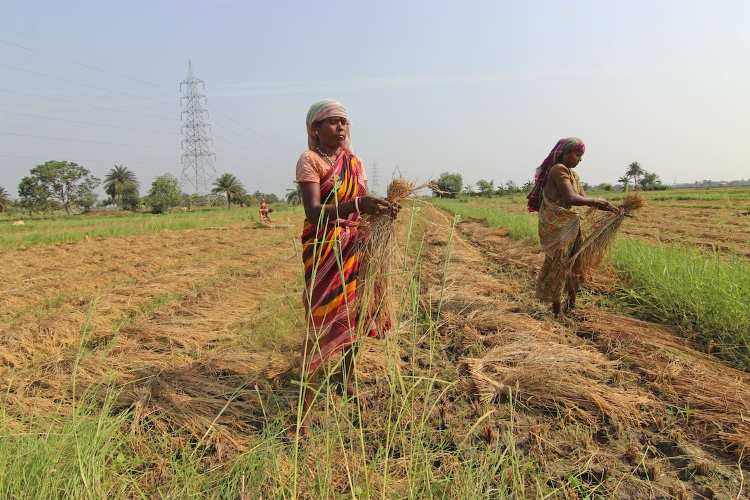
As farmers continue their fight for the legalisation of MSP, a NITI Aayog report has thrown a curveball. While acknowledging the need for MSP to secure farmer income, it emphasises diversification away from wheat and rice, crops currently with guaranteed prices. It advocates reconciling of MSP with the demand for pulses and oilseeds, and calls for comprehensive reforms in the government’s MSP strategy. The situation suggests that a blanket minimum support price policy may not suffice. Agricultural economists agree that MSP policy restructuring is necessary, taking into account future demand-supply projections for grains, pulses, and edible oils.
The NITI Aayog’s projections indicate that, India’s pulse production will reach approximately 47 million tonnes by 2047-48, falling short of the demand projected at 49 mt, leading to a 2 mt deficit. It stresses the importance of focusing on crops anticipated to experience a surge in demand and incentivising their increased production. Currently, pulse production is inadequate to meet demand without concerted efforts toward improving yields and allocating more acreage. Similarly, the report predicts a shortfall in edible oils, with demand expected to rise to about 31 mt by 2047-48 and production anticipated to reach only about 24 mt, resulting in a 7 mt shortage.
READ | Investment Facilitation for Development deal sparks conflict at WTO
The role of MSP in crop production is pivotal. The ongoing protests see farmers advocating legalisation of MSP to ensure sustainable pricing for their crops, offering them a decent income. Currently, the government sets a minimum purchase price for wheat and rice to guard against price drops, but there is a call to extend MSP coverage to other crops, aiming to provide sustainable financial support to farmers.
India’s MSP system, introduced in the 1960s to incentivise food grain production, has evolved into a contentious issue. Initially implemented for wheat and rice, its success fuelled concerns about overproduction and market distortions. While it provides a safety net for farmers, its impact on crop choices and its WTO compatibility remain debated.
Minimum Support Price policy is designed to secure farmers’ income by guaranteeing a minimum price for their produce, which the government will purchase if market prices fall below this level. Although MSP does not directly tackle the demand-supply gap for crops, it influences the choice of crops planted. MSP can encourage overproduction of certain crops if demand does not match, and may lead farmers to prioritise crops with higher MSPs, causing imbalances in the agricultural ecosystem.
India’s MSP system has been a point of contention with the WTO, which is critical for food security and supports small farmers. Despite criticisms from developed nations about market distortion, India considers MSP essential for addressing farmer suicides and the agricultural crisis exacerbated by extreme weather events and decreasing water tables.
In recent years, government expenditure on minimum support price has grown significantly, exceeding Rs 1.7 trillion for paddy and wheat alone in 2022-23. This raises concerns about fiscal sustainability and potential market distortions. The NITI Aayog report suggests a shift towards targeted support through DBTs and productivity-enhancing investments, potentially reducing reliance on expensive procurement programmes.
Road ahead for MSP
The MSP programme requires urgent reform. The WTO dispute presents an opportunity for the government to revisit farmer support programs, even as there is pressure to sideline the WTO. Indian agriculture, accounting for about 16% of GDP and employing over 40% of the workforce, faces sustainability challenges with the current MSP policy due to its impact on market dynamics and affordability.
A potential solution involves increasing direct benefit transfers (DBTs), which can benefit small farmers and address distortions created by current subsidies favouring large farmers. The government could also invest more in productivity-enhancing infrastructure and phase out free electricity and water. Limiting MSP to a floor price that prevents price collapse and aligns with the inflation target of 4% could help stabilise inflation expectations. MSP should ultimately serve as a tool to support poor farmers rather than for gaining export advantages.
